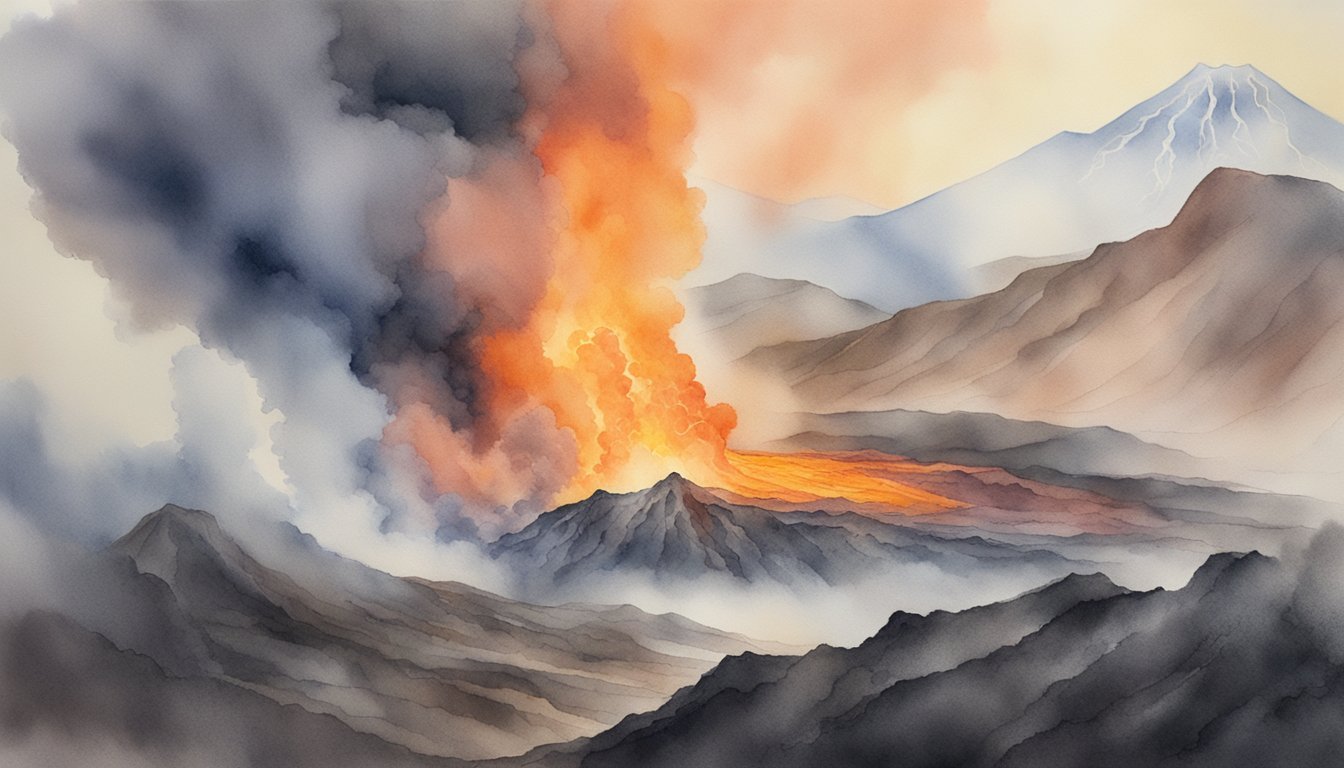Understanding the Ring of Fire
Geological Significance
The Ring of Fire is a 40,000-kilometer (25,000-mile) horseshoe-shaped region around the Pacific Ocean. It is considered the most seismically and volcanically active zone in the world. Uncanny as it may be, about 90% of all earthquakes and 75% of all active volcanoes on Earth are situated within the Ring of Fire. The geological processes at play in this region are driven by the movement of various tectonic plates, including the Pacific Plate, the Nazca Plate, and the North American Plate.
Major Geographic Regions
The circum-Pacific belt stretches across several regions, such as the Indonesian archipelago, the Philippines, Japan, the Kuril Islands, the Aleutians, and the west coast of North and South America. Along these island arcs and coastal areas, one can witness a high density of volcanoes and seismic activity. In fact, many of the strongest and most devastating earthquakes in history have originated within the Ring of Fire.
Key Tectonic Plates
The Ring of Fire owes much of its activity to the interaction between tectonic plates. Some of the most significant plates in this region are the Pacific Plate, the Nazca Plate, the North American Plate, and the Philippine Plate.
-
The Pacific Plate lies beneath the Pacific Ocean and covers an extensive area. As it moves westward, it comes into contact with several other tectonic plates, resulting in subduction zones and convergent boundaries.
-
The Nazca Plate is located off the western coast of South America. It converges with the South American Plate, forming the Andes mountain range and creating a subduction zone responsible for numerous earthquakes and volcanic activities.
-
The North American Plate comprises the entirety of North America and the westernmost part of the Atlantic Ocean. Along its western boundary, it interacts with the Pacific Plate, leading to the formation of various fault lines and frequent seismic events.
-
The Philippine Plate is situated east of the Philippines, interacting mainly with the Eurasian Plate and the Pacific Plate. The convergence of these plates forms a complex zone of subduction, responsible for frequent earthquakes and volcanic eruptions in the region.
The movement of these tectonic plates, along with the various plate boundaries and fault lines, gives rise to the intense geological activity experienced within the Ring of Fire. This fascinating area truly embodies the immense power and dynamism of Earth’s geology.
Volcanism and Seismic Activity

Prominent Volcanoes and Eruptions
The Ring of Fire is home to 75% of the world’s active volcanoes and is known for its numerous volcanic eruptions. Some of the most famous eruptions in history have occurred within the Ring of Fire, such as the Krakatoa eruption in Indonesia, the 1980 eruption of Mount St. Helens in the United States, and the 1991 eruption of Mount Pinatubo in the Philippines. These eruptions had significant global impacts, affecting climate, ecosystems, and human societies.
Seismic Incidents and Earthquake Zones
The Ring of Fire is also responsible for 90% of the world’s earthquakes, making it a highly seismically active region. Many tectonic plates interact along the ring, leading to the formation of deep ocean trenches such as the Mariana Trench in the western Pacific and the east Pacific rise. Major earthquake zones in the Ring of Fire include the western coast of North America, the Andes Mountains in South America, and the island nations of Japan, Indonesia, and the Philippines. The Valdivia Earthquake in Chile (1960) is considered the most powerful earthquake ever recorded, with a magnitude of 9.5.
The Impact on Human Society
The high level of volcanic and seismic activity in the Ring of Fire has both positive and negative impacts on human society. On one hand, volcanic eruptions can lead to widespread destruction, loss of life, and the displacement of communities. For example, the eruption of Mount Tambora in 1815 is considered one of the largest volcanic eruptions in history, causing an estimated 71,000 deaths and leading to the “Year Without a Summer” due to volcanic ash blocking sunlight.
On the other hand, volcanic activity can also produce fertile soil, which benefits agriculture. The Andes Mountains, for example, are known for their rich, volcanic soil that supports the cultivation of various crops. Additionally, the Ring of Fire serves as a source of geothermal energy, providing natural power generation for countries like Iceland, the United States, and the Philippines.
In conclusion, the Ring of Fire is a fascinating geological region with significant volcanic and seismic activity. The constant interaction of tectonic plates and the resulting natural phenomena impact human societies in a variety of ways, shaping the landscapes, ecosystems, and livelihoods of the people who reside in this remarkable area.

